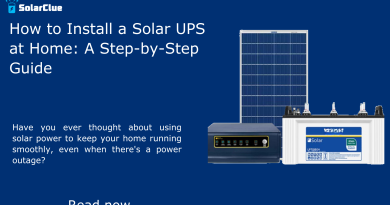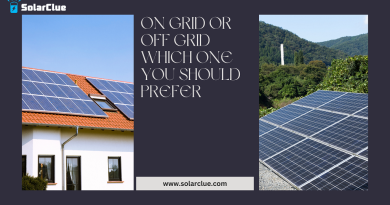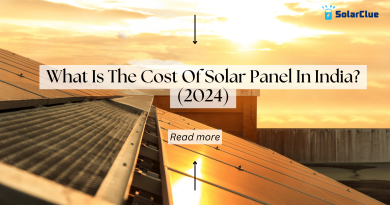How to compare solar panels?
Solar panels are a long-term investment, and choosing the right one can significantly impact your energy production, savings, and environmental footprint. This guide will help you navigate the key factors to consider when comparing solar panels, including efficiency, wattage, warranty, cost, and brand reputation. We’ll also explore different solar panel technologies, tips for evaluating manufacturers, and the role of various factors like government incentives and future trends.
Table of Contents
- 1 Efficiency and Wattage: Understanding the Key Metrics
- 2 Comparing Different Solar Panel Technologies
- 3 Warranty and Product Longevity
- 4 Cost Analysis and Return on Investment
- 5 Evaluating Solar Panel Brands and Manufacturers
- 6 Considering Roof Space and Orientation
- 7 Government Incentives and Rebates
- 8 The Role of Battery Storage
- 9 Environmental Impact and Sustainability
- 10 Future Trends in Solar Panel Technology
- 11 Case Studies of Successful Solar Panel Installations
- 12 Table: Comparison of Solar Panel Technologies
- 13 FAQ Section
- 14 Conclusion
Efficiency and Wattage: Understanding the Key Metrics
Solar Panel Efficiency
- Definition: Efficiency measures how much sunlight a solar panel can convert into usable electricity. Higher efficiency panels convert more sunlight into energy, which is especially important for homes with limited roof space.
- Typical Efficiency Ranges:
- Monocrystalline Panels: 15-22%
- Polycrystalline Panels: 13-18%
- Thin-Film Panels: 10-12%
Wattage
- Definition: Wattage refers to the power output of a solar panel under standard test conditions. It indicates the total power a panel can produce.
- Common Wattage Ratings:
- Residential Panels: 250W – 400W
- Commercial Panels: 400W – 500W
Efficiency vs. Wattage
- Efficiency: Important for maximizing energy production in limited space.
- Wattage: Influences the total power output and system sizing. Higher wattage means fewer panels are needed to meet energy needs.
Comparing Different Solar Panel Technologies
Monocrystalline Solar Panels
- Overview: Made from single-crystal silicon, these panels are known for high efficiency and durability.
- Pros: High efficiency, space-saving, long lifespan.
- Cons: Typically more expensive.
Polycrystalline Solar Panels
- Overview: Made from multiple silicon crystals, these panels are less efficient but more affordable.
- Pros: Lower cost, solid performance.
- Cons: Lower efficiency, larger space requirements.
Thin-Film Solar Panels
- Overview: Made from materials like cadmium telluride, these panels are flexible and lightweight.
- Pros: Lightweight, flexible, good performance in low light.
- Cons: Lower efficiency, shorter lifespan.
PERC (Passivated Emitter and Rear Cell)
- Overview: A technology that adds a layer to monocrystalline or polycrystalline cells, improving efficiency by reflecting unabsorbed light back into the cell.
- Pros: Higher efficiency, better low-light performance.
- Cons: Slightly higher cost than standard cells.
Bifacial Solar Panels
- Overview: These panels can absorb light from both sides, increasing energy production.
- Pros: Higher energy output, suitable for various installations.
- Cons: Higher cost, requires optimal installation to maximize benefits.
Warranty and Product Longevity
Types of Warranties
- Performance Warranty: Guarantees that the panels will produce a certain percentage of their rated power output over a specified time, usually 25 years.
- Product Warranty: Covers manufacturing defects and equipment failure, typically ranging from 10 to 25 years.
Importance of Warranty
- Longevity: Longer warranties indicate the manufacturer’s confidence in their product’s durability and performance.
- Peace of Mind: A strong warranty protects your investment and ensures long-term reliability.
Cost Analysis and Return on Investment
Upfront Costs
- Panel Costs: Monocrystalline panels are typically the most expensive, followed by polycrystalline and thin-film panels.
- Installation Costs: Varies by region, system size, and complexity of installation.
Return on Investment (ROI)
- Payback Period: The time it takes for the energy savings to cover the cost of the solar panel system. Typically ranges from 5 to 10 years.
- Factors Influencing ROI: Energy costs, government incentives, panel efficiency, and local sunlight exposure.
Evaluating Solar Panel Brands and Manufacturers
Key Factors to Consider
- Brand Reputation: Look for manufacturers with a strong track record of quality, reliability, and customer service.
- Industry Certifications: Ensure the panels are certified by recognized bodies like IEC, UL, or TUV.
- Market Presence: Brands with a global presence and long history in the market are generally more reliable.
Top Solar Panel Brands
- SunPower: Known for high efficiency and premium quality.
- LG: Offers a good balance of performance and aesthetics.
- Canadian Solar: Known for cost-effective panels with solid performance.
- Trina Solar: Offers a range of panels with a strong warranty and reliability.
Considering Roof Space and Orientation
Roof Space
- Space Constraints: High-efficiency panels are ideal for small roofs as they generate more power per square meter.
- Panel Size: Consider the physical size of the panels to ensure they fit the available roof space.
Orientation
- Optimal Direction: In the Northern Hemisphere, south-facing panels receive the most sunlight, while in the Southern Hemisphere, north-facing is optimal.
- Tilt Angle: Adjusting the tilt angle based on your latitude can maximize sunlight exposure.
Government Incentives and Rebates
Types of Incentives
- Federal and State Subsidies: Many governments offer tax credits, rebates, and other incentives to reduce the cost of solar installations.
- Net Metering: Allows homeowners to sell excess energy back to the grid, reducing overall energy costs.
Importance of Incentives
- Reducing Upfront Costs: Incentives can significantly lower the initial investment needed for solar panels.
- Improving ROI: Government support can shorten the payback period and improve overall ROI.
The Role of Battery Storage
Benefits of Battery Storage
- Energy Independence: Batteries allow you to store excess energy generated during the day for use at night or during power outages.
- Enhanced ROI: By storing and using your energy, you can further reduce your reliance on the grid and maximize savings.
Popular Battery Options
- Tesla Powerwall: Known for high capacity and efficiency.
- LG Chem: Offers reliable performance and integration with various solar systems.
- Enphase Encharge: Provides modular storage solutions with good scalability.
Environmental Impact and Sustainability
Sustainable Manufacturing
- Eco-Friendly Production: Look for manufacturers that prioritize sustainability in their production processes, such as using recycled materials or reducing carbon emissions.
- End-of-Life Recycling: Consider panels from manufacturers that offer recycling programs to minimize waste.
Long-Term Environmental Benefits
- Reducing Carbon Footprint: Solar panels help reduce reliance on fossil fuels, significantly lowering carbon emissions over their lifespan.
Future Trends in Solar Panel Technology
Emerging Technologies
- Perovskite Solar Cells: Offer the potential for higher efficiency at lower costs but are still in the research phase.
- Bifacial Panels: Gaining popularity for their ability to capture sunlight from both sides, increasing overall energy production.
Advancements in Efficiency
- Improved Efficiency: Ongoing research is focused on improving the efficiency of solar cells, allowing for more power generation from the same surface area.
- Integration with Smart Home Systems: Future solar panels may integrate more seamlessly with smart home technologies, allowing for optimized energy management.
Case Studies of Successful Solar Panel Installations
Residential Installation in California, USA
- System Size: 6 kW
- Panel Type: Monocrystalline
- Result: Achieved a 25% reduction in annual energy costs with a payback period of 7 years.
Commercial Installation in Gujarat, India
- System Size: 100 kW
- Panel Type: Polycrystalline with battery storage
- Result: Enabled 80% energy independence for a manufacturing facility, with an ROI achieved in 5 years.
Table: Comparison of Solar Panel Technologies
| Technology | Efficiency | Lifespan | Cost | Best Use Case |
|---|---|---|---|---|
| Monocrystalline | 15-22% | 25-30 years | High | Limited roof space, high energy needs |
| Polycrystalline | 13-18% | 20-25 years | Medium | Budget-friendly, adequate space |
| Thin-Film | 10-12% | 15-20 years | Low | Lightweight applications, large installations |
| PERC | 16-23% | 25-30 years | Medium-High | High efficiency, various applications |
| Bifacial | 15-20%+ | 25-30 years | High | High energy output, reflective surfaces |
FAQ Section
1. What is the most efficient type of solar panel?
Monocrystalline panels are generally the most efficient, with efficiency rates ranging from 15-22%.
2. How do I choose the right solar panel for my home?
Consider factors such as roof space, energy needs, budget, and local climate. Monocrystalline panels are ideal for high energy needs and limited space, while polycrystalline panels offer a more budget-friendly option.
3. What role does warranty play in choosing solar panels?
A longer warranty indicates higher confidence in the product’s longevity and reliability. Look for warranties that cover both performance and product defects for at least 20-25 years.
4. Is it worth investing in solar panels with battery storage?
Yes, especially if you want to maximize energy independence and savings. Battery storage allows you to use stored energy during peak hours or outages, reducing reliance on the grid.
5. How do government incentives affect the cost of solar panels?
Government incentives can significantly reduce the upfront cost of solar panels, shorten the payback period, and improve the overall return on investment.
Conclusion
Choosing the right solar panels requires careful consideration of multiple factors, including efficiency, cost, warranty, and brand reputation. By understanding the different technologies available and evaluating your specific needs and conditions, you can make an informed decision that maximizes your energy production and financial savings. Whether you’re investing in solar panels for your home or business, this comprehensive guide provides the tools and knowledge you need to select the best solar panel system for your situation.



